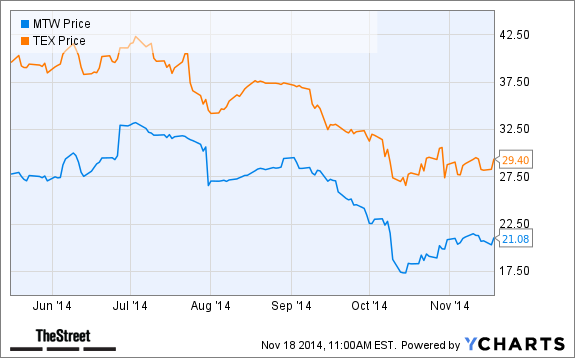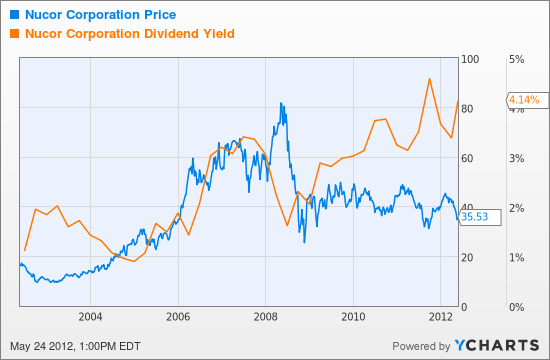BeatenDown Dividend Stocks For 2014
Post on: 16 Март, 2015 No Comment

Follow Comments Following Comments Unfollow Comments
2013 was the year of dividend destruction.
That may sound like an odd statement given that 2013 was a record year in terms of dollars paid out in dividends. The number of companies raising their dividend hit the highest levels in over 20 years. and dividend cuts were almost unheard of. And given that the dividend payout ratios of American stocks are scraping along at a historically low 32%, 2014 will almost certainly see income investors rewarded with more cash than ever.
All of this is fantastic news for income investors. Yet looking at the price returns of several solid dividend-paying stocks, Mr. Market is not rewarding this generosity. Non-dividend-paying stocks have outperformed their dividend-paying peers by a wide margin in 2013, and—fearing the effects of Fed tapering—investors have wholesale dumped some of the safest, most dependable, and most bond-like stocks.
I expect dividend-paying stocks to enjoy a rally in 2014 as the market makes sense of the Fed’s tapering plans. As I wrote recently. I expect that, counterintuitively, tapering will actually cause bond yields to fall. Through six months of uncertainty as to Fed’s intentions, the bond market priced in the worst.
But remember, the Fed is not the only story here. Foreign investors — led by Japanese institutional investors — are aggressively buying U.S. Treasuries. and overall bond demand remains high even while the growth in new supply continues to shrink. The U.S. budget deficit, while still too high, has been shrinking for more than a year .
Today’s we’re going to take a look at some of my favorite dividend stocks that are trading at beaten-down prices—prices that I do not expect us to see again for a very long time, if ever.
Kinder Morgan Kinder Morgan
I’ll start with one of my very favorite energy infrastructure companies, Kinder Morgan (KMI), which is down about 13% from its May highs.
If you are an income investor investor. you are no doubt familiar with Kinder Morgan Energy Partners (KMP) [Sizemore Capital is long KMI and KMP]. It’s one of the most popular and widely-held pipeline MLPs, and with good reason. Since going public in 1992, the stock has delivered returns of more than 1,200%, and that does not include distributions.
Kinder Morgan Inc. is the general partner of KMP and can be thought of as a leveraged play on the MLP due to what is called “incentive distribution rights.” Kinder Morgan Inc. gets one half of any distribution increase by Kinder Morgan Energy Partners. (Kinder Morgan Inc. is also the general partner of El Paso El Paso Pipeline Partners).
Kinder Morgan Inc. has had a poor 2013 for a couple reasons. In addition to the same Fed tapering fears that have sapped virtually all income investments, KMI took a beating after El Paso Pipeline Partners posted unimpressive earnings and gave guidance on the distribution that was shy of what Wall Street expected. A high-profile short campaign by research firm Hedgeye didn’t particularly help either.
Yet if KMI’s prospects were so dire, then why are its insiders buying the stock hand over fist ?
In the month of December alone, founder and CEO Richard Kinder purchased 828,000 shares of KMI on the open market worth over $27 million. This follow the 500,000 shares he purchased in June and again in September. Since June, Richard Kinder has amassed a staggering 1.8 million shares worth over $60 million.

And he’s not the only insider buying. Director Sarofim Fayez chipped in $15 million of his own money, and Vice President James Street added $130,000.
I recommend we invest with the insiders. At time of writing, KMI yields an attractive 4.7%, and management expects to raise the dividend by about 8% in 2014.
American Capital Realty Properties
Next on the beaten-and-battered list is triple-net retail REIT American Capital Realty Properties (ARCP) [ Sizemore Capital is long American Capital Realty Properties], which is down nearly 30% from its May highs. ARCP is unique among dividend payers in that it pays its dividend monthly rather than quarterly (see 5 Monthly Dividend Stocks to Snag in 2014 ).
In the low-yield environment of the past view years, triple-net REITs such as ARCP have come to be viewed as bond substitutes. But even in a more normal yield environment, I consider triple-net REITs to be preferable to bonds. Unlike bonds, triple-net REITs generally have a degree of built-in inflation protection as the rents that support the dividend rise over time.
And in the case of ARCP, you’re getting a high 7.5% yield from a conservative property portfolio that would normally only be possible with a highly-risky junk bond.
ARCP has a shorter trading history than some of its peers, such as Realty Income and National Retail Properties, which largely explains why its yield is higher. As a relatively new REIT, ARCP is largely unfollowed by investors. But once its merger with Cole Properties is completed, ARCP will be the largest trip-net REIT by market cap and total square footage, and it will no longer be flying under Wall Street’s radar.














